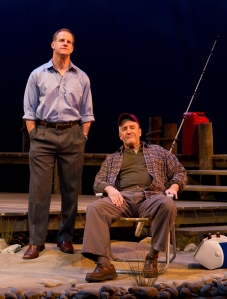by Sally Ollove
TULIPOMANIA just ended its run at Philadelphia’s Arden Theatre Company. TULIPOMANIA was originally commissioned by the Arden in 2005—before the economic crash of 2008, but right in the middle of the mortgage bubble. It went through many stages of development, ultimately colored by the economic rollercoaster America rode between 2005 and its premiere in 2012. Early in the process playwright Michael Hollinger was attached as the book writer and Michael Ogborn was composing, before Michael Ogborn took over as solo writer and composer. For most of its life, TULIPOMANIA took place in 17th century Amsterdam. Finally, when it became clear that the period was holding the story back, Michael (Ogborn) decided to set the main action in contemporary Holland where the patrons of a hash shop start listening to the tale of one Dutchman, Jan van der Bloem, and his experience of the Dutch Tulip craze. As they get high, the patrons get involved, acting out the man’s story and investing in it emotionally. Throughout the piece, we learn tiny bits and pieces about the lives of patrons as they find parallels between their own stories and that of Jan van der Bloem’s tale, namely, the toll that obsession with riding an economic high takes on families and personal relationships.
I came on very late in the process, attended a workshop earlier in the spring and was present for the rehearsals leading up to the show. Michael and I had many great conversations about the commission process and what kinds of work environments he gravitates towards. Over and over again two words came up: trust and collaboration.
While most acknowledge that theatre is a collaborative art, Michael embodies the ideal. In the rehearsal room, he welcomed input into the script or score from anywhere in the room. I have often seen directors work this way, but rarely writers, even highly collaborative ones. While TULIPOMANIA absolutely retained Michael’s vision and voice, there is much in the text that comes from others: Michael let director Terry Nolen shift major pieces of dialogue around until he found the best option, allowed Music Director and Orchestrator Dan Kazemi to play with tone, tempo, and harmony freely, and thought hard when I raised questions about structure, motive, and content resulting in the letting go of numerous darlings. He fit the characters to the actors to such an enormous degree that most of the costumes were indistinguishable from their personal wardrobes. Michael essentially turned the work over to us for the rehearsal process, trusting that we would do right by the play, confident that we could solve problems, and always aware that a world premiere doesn’t mean set in stone. Sometimes solutions need to be road-tested for a run to see if they work before abandoning them. As he explains below, a one-shot world premiere is far from his developmental ideal.
We were working hard and around the clock up until the very last moments, so I didn’t get a chance to record our conversations. Instead, I sent him four questions, which he thought about on the train ride down from New York for closing weekend and hand-wrote on a yellow legal pad.
Sally Ollove: What are the 3 (or 2 or 4 or 5) most important characteristics or organizational qualities of a good development process for you?
Michael Ogborn: The first thing I look for is a true commitment between the theatre and the writer, a sense that what you are writing has a place in the theatre’s artistic mission. The play should match the theatre. The second is an ensemble of trained actors who are familiar with and enjoy doing new work. I like to be able to say to myself: “if these actors can’t make it work, it’s not their fault.” A third is communication/dialogue between the author and the director during the “downtime,” between reading and workshop—keeping the ball in the air as a play is re-written and sharpened. Finally, I look for a nurturing sense of collaboration, especially when commissioned to create new work.
A major requirement I need is time. Time is always a major factor. I write two kinds of shows. Both are exciting methods to me and require different skill sets. The first kind I don’t let out of the apartment for years. Not until they are ready. This is my ideal for shows developed in my own time. BABY CASE took me almost six years on my own to write. This method allows me to get to know my play before introducing it to others. The second kind is developed in public—from the day the title is announced there is an expectation. When People’s Light and Theatre Company announces the annual Panto, we have nothing written, only a deadline. In this type of development, we all discover it together. Both ways can yield quality work when the work and the theatre are in harmony. We could always use more time, but that’s part of the excitement—people are waiting to see it. It has to be ready by opening night. It’s the runway to opening night that I always want to be as long as possible.
Plays and musicals are two different animals and require different means of development. An extra week is always welcome to any artist, but it’s essential when doing a new musical. There is no cast recording to listen to. We find the sound together. In order for rehearsals to move forward, I think a week to focus on music only is very important. That said, for one workshop of TULIPOMANIA, we did the opposite and just read the lyrics and script without music. That was instrumental in finding clarity in storytelling, character, and action.
SO: What do you think is essential for cultivating emerging musical writers? What isn’t happening that should happen?
MO: Essential in cultivating new work is a commitment from the theatres to create artistic homes for emerging writers, a place where they are safe to create without the glare of the spotlight. I also think that the regional theatres could do more to combine their seasons. To produce a new show in three or four different theatres, allowing the authors to continue working. The pressure of a first production is great enough without “world premiere” attached to it, unless it’s been tested.
When Terry and I did CAFÉ PUTTENESCA, it was a co-production at the Arden and City Theatre in Pittsburgh. There were incredible changes to the script between the two openings and the show was much better for it. The [old practice of the] out-of-town tryout was there for a reason, the audience teaches the show what it still needs to succeed.
SO: Specifically speaking now about TULIPOMANIA. What most attracted you to the story of the Dutch Tulip craze?
MO: What attracted me most was the human element in the historic event. The eternal folly of mankind playing out in the unlikeliest of times and places. Given the recent bubbles that have been popping all around us, I thought it was time to explore and exploit this event in a modern day context.
SO: What was the moment in which you unlocked what the play was about for you and how did you arrive there? Did you start with a song or a character or a phrase or an image or an idea?
MO: I started with the image of a woman/dancer. She is dressed in a parchment-colored body stocking covered with 17th century watercolor renderings of tulips. She is joined by five others. Together they make up the six petals of the tulip. They dance around the bed of a sleeping man—he awakens and dances with them. The seeds of obsession are planted in the subconscious in the dark night. This image led me to the opening waltz music. The dancing tulips didn’t survive but the music provided me with a doorway to the musical world of the play. The dancing tulips never made it to the stage, to my dismay.
Though TULIPOMANIA has finished its run at the Arden, Michael intends to continue developing the piece, perhaps by fine-tuning, perhaps with radical changes. Regardless, he considers the information learned in the full course of a run has been invaluable as he moves forward. Meanwhile, New Yorkers can catch the New York premiere of BABY CASE at the New York Musical Theatre Festival: read New York Time Arts Beat “New York Musical Theatre Festival Report” 18 July 2012.
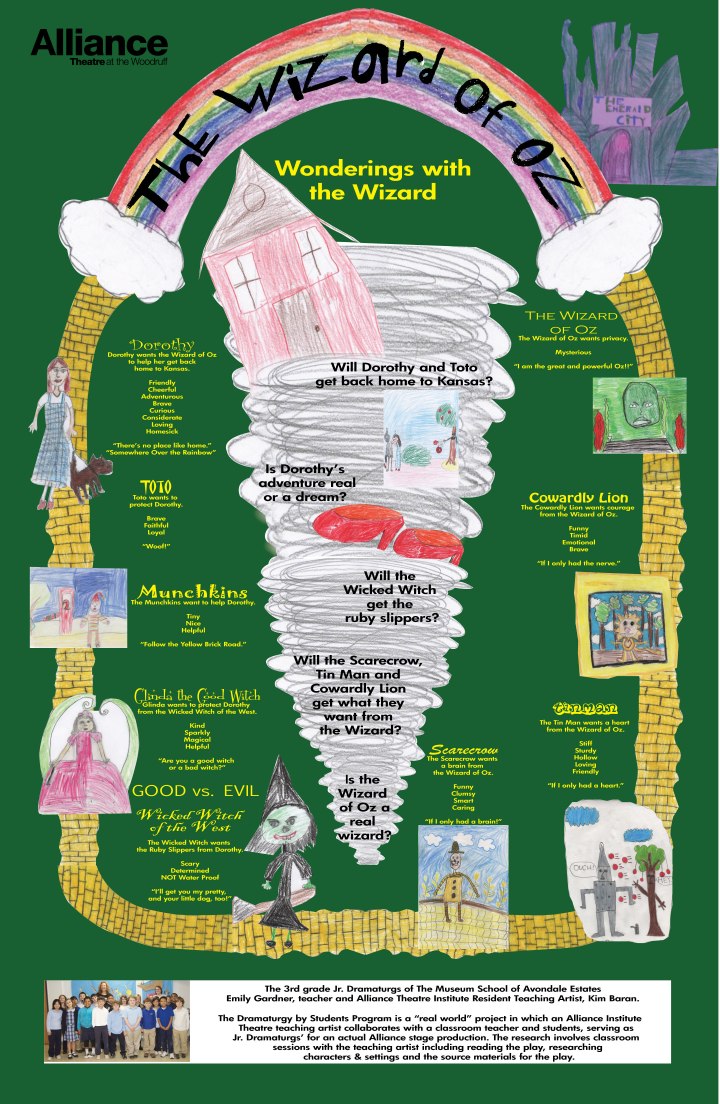
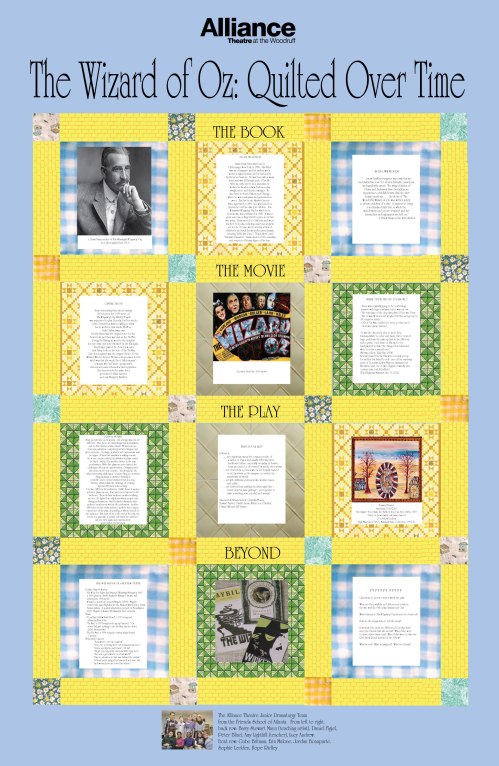
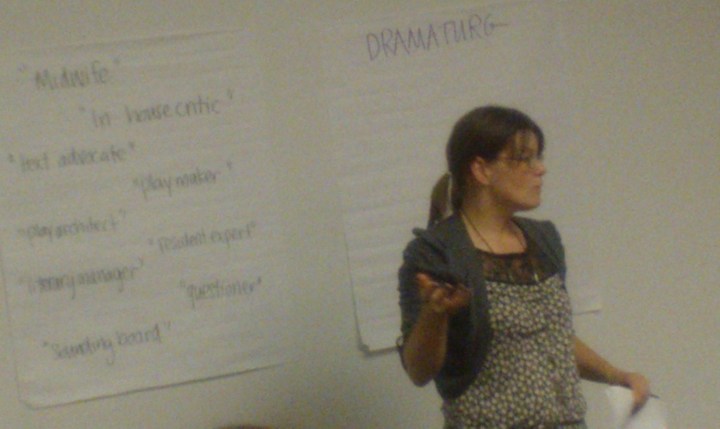
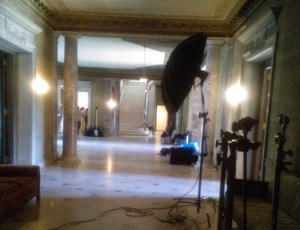


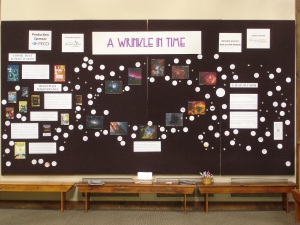
![DSC_8658[1]_cannotfishorswim](https://poorlessingsalmanack.files.wordpress.com/2012/04/dsc_86581_cannotfishorswim.jpg?w=300&h=199)
